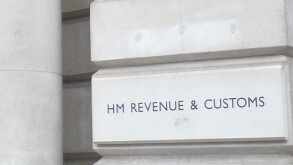The international transfer pricing of goods and services between associated enterprises is regulated by article 110, paragraph 7, of the Italian Income Tax Code (TUIR), which provides that intercompany transactions can be carried out in accordance with the arm's-length principle.
In support of such provision, the Italian tax authorities issued Circulars No 32 of 1980 and No 42 of 1981, which broadly deal with transfer pricing matters.
In 2010, these were followed by specific guidelines on the preparation of proper documentation proving compliance of intercompany prices with the arm's-length principle so as to benefit from the non-application of penalties in case of a redetermination of transfer prices (regulation of the Commissioner of the Italian Revenue Office, dated September 29 2010 and Circular No 58 of December 15 2010).
Circular No 32 of 1980 also deals with transfer pricing with reference to transactions involving intangibles.
In particular, it identifies a number of factors (such as research and experimentation, lower or higher yearly obsolescence, the lifetime of the asset, and the originality of the technology) that should be taken into account for the determination of the correct value of the royalties in case of licensing of intangible property.
Such factors must be combined with various legal parameters included in the agreement clauses: exclusivity rights, territorial limitations, protection granted to industrial inventions, sub-licensing rights, determination of the resale price of goods, contract duration, the prohibition to export goods derived by the use of the invention, etcetera.
Finally, the aforementioned circular identifies a series of values (a sort of safe harbour) that can be considered at arm's-length in specific recurring circumstances.
Italy’s Supreme Court (Judgment No 4927 of February 27 2013) expressed itself in favour of the tax authorities deeming not deductible the difference between the percentage of 30% – paid by way of royalty from an Italian company to its American parent company – and the percentage of 7%, which the tax authorities considered to be the arm’s-length royalty.
To support a royalty value equal to 30%, the company provided a series of documents (such as distribution agreements involving similar products, an application of the price comparison method to the case under examination, an opinion on the appropriateness of the value drafted by an international law firm, and additional analytical comparison studies) that the judges did not deem sufficient to prove compliance with the arm’s-length principle.
On the contrary, the Supreme Court held that the value of 7% calculated by the tax authorities was determined correctly on the basis of:
· the criteria established by Circular No 32 of 1980 on transfer pricing;
· an investigation carried out by the tax authorities among companies in the same sector as the taxpayer under scrutiny and declared valid and effective by the judges.
Lastly, the Supreme Court determined the tax avoidance nature of the company’s actions highlighting that it was convenient for the Italian company to reduce its income by increasing that of its parent company since the latter is subject to a lower income tax rate (8.7% in the state of Delaware versus 36% in Italy).
Valente Associati GEB Partners
Viale Bianca Maria, 45
20122 Milan, Italy
Managing Partner: Piergiorgio Valente
Tel: +39 02 7626131
Fax: +39 02 76001091
Email: p.valente@gebnetwork.it
Website: www.gebpartners.it









